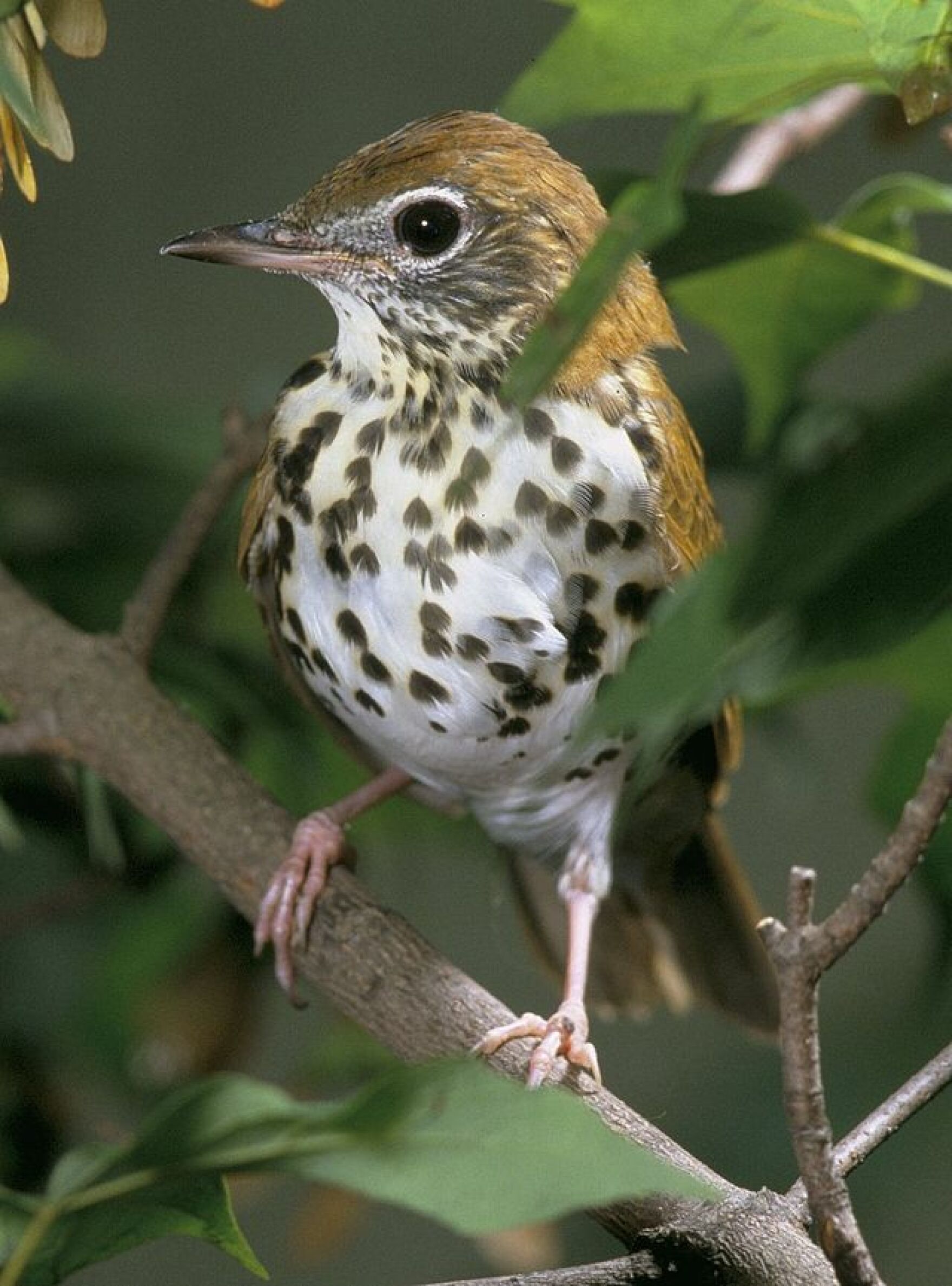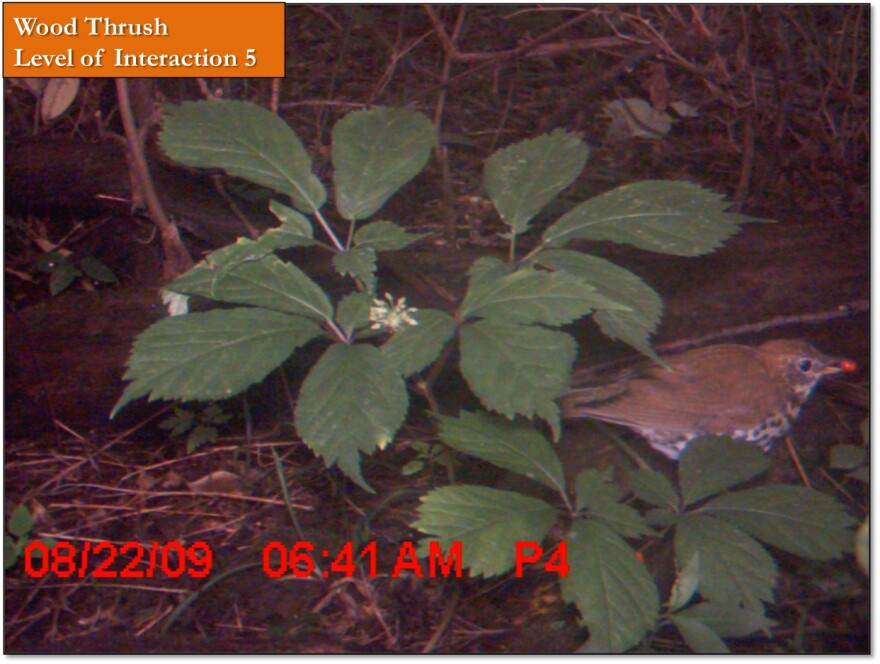Some researchers at West Virginia University have discovered that wild ginseng—a native and valuable medicinal plant—could be using specific birds to catch a ride into climates for which it’s better suited.
Eberly Professor of Biology at WVU, Jim McGraw, has been studying ginseng from every angle for 18 years. A simple question lead McGraw and researchers Amy Hruska and Sara Souther to ask other questions, which is lead them to discover an ecological survival story.
STUDY 1: Fruit
Why does ginseng bear bright red berries?
“When a plant evolves fleshy fruit like that, it usually means there’s some kind of animal interaction going on, but we had no idea what that was,” said McGraw.
So all around wild fruiting ginseng cameras were set, and for three years tripped by the occasional raccoon, opossum, mouse, or turkey. But there was one pretty regular visitor: the Wood Thrush, (a cousin of the Robin, actually, but with superior vocal abilities on account of a double-set of vocal chords).
McGraw says after analyzing some 900 photos, they discovered the thrushes were in fact seduced by the bright red ginseng berries.
STUDY 2: A Seed Study
How do seeds survive the thrushes, or do they?
McGraw and researcher Amy Hruska found out there were captive thrushes living at the Tennessee Aquarium in Chattanooga, and convinced the good folks there to let them feed ginseng berries to the birds.
http://youtu.be/FTQUlvCQPC4
Video actually shows regurgitation of seed.
The researchers observed that the birds would eat the whole berry but 5 to 30 minutes later…
“They would actually sit on a branch and start flipping their bills together and a seed would pop out,” McGraw said, “And they were completely viable seeds.”
So the research team found ginseng’s wild seed dispensers!
STUDY 3: Thrush Tracking
Where and how far do the thrushes wander?
…This study is underway…
Understanding thrush activity is the latest query commanding attention in the larger effort to study a threatened and valuable plant. Wild populations are increasingly rare. We know overharvesting, deer browsing, and loss of habitat are major reasons for declines. But McGraw thinks this thrush research might shed light on another threat to wild ginseng populations.
“Wood thrushes, as common as they are, have actually declined by 50 percent over the last fifty years,” McGraw said. “They’re one of the poster children for major songbird decline in the Eastern deciduous forest.”
Losing so many birds is very troubling because ginseng populations may well rely on thrushes not only to help disperse their seeds, but also to help them adapt to a changing climate.
Wild ginseng’s range stretches from eastern Canada south through the eastern United States. But genetically, those ginseng populations vary and over ages have adapted to their specific regions. McGaw suspect thrushes will play an important role in helping ginseng survive by helping it migrate from their warming regions into cooler climates. If the birds themselves can survive.





















